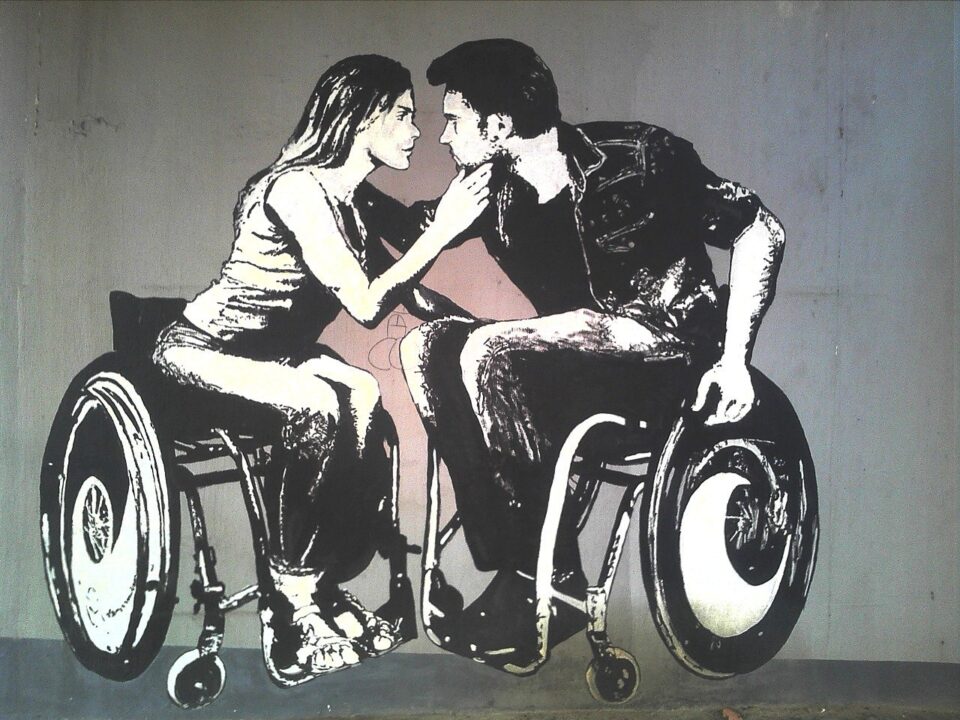
Crime
July 22, 2025
Islamophobia
July 22, 2025Limits Of The Criminal Law
Limits
The Limits of Criminal Law
No-one denies that some things should not be criminalized. What is less clear is how we are to work out what these things are. One approach is to seek constraints on permissible criminalization.
Even if the values that justify having criminal law count in favour of criminalization, our reasons to do so may be defeated by reasons that count against. A constraint identifies conditions under which the latter reasons always win. Consider, for example, the wrongfulness constraint:
Principles like (W) give us a line we can draw without reference to (at least some) morally salient particulars. Conduct that falls outside the line may not be criminalized come what may. Imagine we are considering whether to make it a crime to possess guns.
Doing so will prevent a great deal of harmful wrongdoing that cannot be prevented otherwise. This is a powerful moral reason to criminalize. But if (W) is sound, and gun possession is not morally wrongful, that powerful reason is irrelevant to the decision with which we are faced.
We are not permitted to criminalize; however much harm criminalization would prevent (Moore 1997, 72–73; Simester and von Hirsch 2011, 22–23; Duff 2014b, 218–222).
Some suspect that all purported constraints on criminalization fail (Duff et al 2014, 44–52; Tadros 2016, 91–107). This is not to say that anything goes. It is rather to say that we cannot use a line like that drawn by (W) to work out what is permissibly criminalized.
To trace the limits of the criminal law, we must engage in a more complex normative exercise: we must consider all morally salient particulars of proposed criminal laws—giving those particulars due weight in our deliberations—and thereby determine whether each proposal should be enacted. The limits of the criminal law cannot be traced in advance of this exercise. Instead, they are determined by it.
The constraint to which most attention has been paid is the so-called harm principle. It is nowadays widely recognised that there is no single such principle. Rather, there are many harm principles (Tadros 2011a; Tomlin 2014b; Edwards 2014). One important distinction is between the harmful conduct principle (HCP) and the harm prevention principle (HPP):
These principles have very different implications. That conduct is harmful, or unreasonably risks harm, does not show that we will prevent a proportionate amount of harm by criminalizing it.
Conversely, we may be able to prevent harm only by criminalizing conduct that is harmless, and that does not unreasonably risk harm.
To see the first point, consider the use of drugs. Criminalizing use may turn a drug into forbidden fruit that is more attractive to potential consumers, and place production in the hands of criminal gangs who make consumption ever more harmful.
Users may become less willing to seek medical treatment for fear of exposing their criminality and may end up with criminal records that lead to social exclusion, and damage their employment prospects for years to come (United Nations 2015).
Where criminalization does have these effects, the harm it does is out of all proportion to any harm prevented. Even if (HCP) is satisfied, (HPP) is not.
To see the second point, consider the possession of guns. Possessing a gun is not itself harmful. And many possess guns without unreasonably risking harm. If one endorses (HCP), one must either weaken one’s chosen principle or accept that gun possession cannot be criminalized.
If one endorses (HPP), things are different. What matters is not the effect of each instance of gun possession, but the effect of criminalizing all of them: if criminalizing possession will prevent harm that would not otherwise be prevented—and do so at a not disproportionate cost—the fact that some owners possess guns safely is beside the point. Whether or not (HCP) is satisfied, (HPP) is.
Harm Principles
Be that as it may, whether we consider other harms remains important: where the scales would otherwise point against criminalization, giving weight to a wider range of harms may tip the balance decisively in its favour.
As well as asking how constraints might be clarified, we must ask how they might be defended. One type of defence proceeds from within our theory of ideals.
A theory of ideals includes an account of the values that bear upon how we should act, and of the priority relations between those values (Hamlin and Stemplowska 2012). To see how such a theory might generate constraints, consider (W). One argument for that principle is the argument from conviction (Simester and von Hirsch 2011, 19–20):
One response to these arguments is that criminal law does not always censure or stigmatize. Another is that the arguments rely on priority claims that cannot be sustained. The argument from conviction depends on our accepting that moral defamation cannot be justified.
The argument from punishment depends on our accepting that those who do not act wrongly have an absolute right not to be punished. These claims may be too strong. To test the second, think again about possession of guns. Imagine that we criminalize possession, and that we have good reason to think that we can thereby save many lives. D
possesses a gun safely because D likes how it looks hanging on the wall. We can grant that D would act wrongly if D’s conduct risked harm to others or prevented the state from saving others’ lives. But as D’s possession is safe, and the state has in fact criminalized possession, neither is the case.
Would the state violate D’s rights if it punished D? It is plausible to think not. D could very easily have refrained from possessing the gun. And if the state were to refrain from punishing safe possessors like D
, more people would be likely to possess guns in the mistaken belief that this was safe. This would likely result in some lives being lost. The fact that not punishing safe possessors would probably have this effect is a good reason to think that safe possessors lack a valid complaint if they are punished.
It is a good reason to think that it sometimes is permissible to punish the morally innocent. If it is, premise (3) of the argument from punishment is false (Tadros 2016, 329–333).
Now consider (HPP). We can imagine a world in which we could flick a switch, sending an electronic signal to D
’s brain, the only effect of which would be that D would not act wrongly. Whatever one thinks of this means of prevention, it is not the means we utilize when we make use of criminal law.
Absent perfect compliance, criminal law prevents wrongs by publicly making accusations, condemning people as wrongdoers, and punishing them for their wrongs. Public accusations often stick even if nothing comes of them. Punishment is harmful by its very nature. The lives of D’s family and friends are collateral damage as D
’s prospects are reduced. Some claim that we can justify causing such harm—at least when the state does the harming—only if this is a necessary and proportionate means of preventing people being harmed. So it is impermissible to criminalize when this condition is not satisfied. Hence (HPP) (Raz 1986, 418–420; Edwards 2014, 259–262).
One might reply that the harm internal to justified punishment is harm we lack reason not to impose. Leaving this aside, it is far from obvious that harm has lexical priority over other values. The above argument for (HPP) seems to depend on this claim. But there is wrongdoing that is both serious and harmless
Constraints like (W), (HCP), and (HPP) require clarification. To apply (W) we need to know what makes something morally wrongful. Plausibly enough, it is morally wrongful to ϕ
only if there is decisive reason not to ϕ. But while this is necessary, it may not be sufficient. I have decisive reason not to go out in the rain without my umbrella. But it does not seem morally wrongful to do so (Tadros 2016, 11–46).
Whatever the correct criterion, we must ask how lawmakers are to apply it. Are lawmakers to ask whether most members of society believe ring to be morally wrongful
l—a matter of conventional morality—or are they to ask whether this is what members would ideally believe—a matter of critical morality (Hart 1963; Devlin 1965)? We must also ask whether just any morally wrongful act will do.
Some wrongful acts also violate rights, such that those who commit them wrong others. On one view, it is only when ring meets this additional test that it is permissible to criminalize ring (Feinberg 1984; Stewart 2010).
Some crimes are mala in se—they criminalize conduct that is morally wrongful independently of the law. Most crimes are mala prohibit—they criminalize conduct that, if morally wrongful at all, is morally wrongful partly in virtue of the fact that it is unlawful. Is (W) compatible with the existence of mala prohibit?
That depends on the extent to which changes in the law can produce changes in morality. The rules of the road are the classic case. Apart from the law, it is morally wrongful to drive dangerously. Such conduct is malum in se. What we should do to conform to this moral norm is not always obvious.
To help, the law puts in place rules that tell us which side of the road to drive on, when to stop, and how fast we may go. Imagine we obey these rules. In doing so, we drive more safely than we otherwise would have we better conform to the moral norm that prohibits dangerous driving.
One proposal is that it is morally wrongful to violate legal norms that have this effect: that help us better conform to moral norms that exist independently of the law (Gardner 2011, 19–21). Mala prohibits of this kind would then be compatible with (W). Of course, things are not so straightforward.
Even if legal conformity generally improves our moral conformity, there may be exceptional cases in which it does not—in which we can violate the rules of the road without putting anyone in danger, or in which violation helps keep everyone safe.
And there may be people for whom even the generalization is not true—whose expertise enables them to systematically violate legal norms without creating risks any greater than those created by the rest of us.
Can an explanation be given of why these violations are nonetheless morally wrongful? If not, (W) implies that even morally beneficial mala prohibit—like the rules of the road—must ultimately be removed from the criminal law (Husak 2008, 103–119; Simester and von Hirsch 2011, 24–29; Wellman 2013).
To apply (HCP) and (HPP) we need a conception of harm. Most views are comparative: we are harmed by some event if and only if that event renders us worse off in some way relative to some baseline. One challenge is to identify the relevant baseline. Are we harmed by an event if we are worse than we would have been if things had been different? If so, different how?
Are we harmed if we are worse off than we were immediately beforehand? Or should we focus not on the position we were or would have been in, but on the position, we should have been in morally speaking (Holtug 2002; Tadros 2016, 187–200)? A second challenge is to determine in what way we must be worse off.
The wider our answer to this question, the more likely it is that harm principles collapse into their supposed rivals. Some say we are harmed when our interests are set back (Feinberg 1984, 31–64). But it is plausible to think that we have interests in avoiding disgust, annoyance, and dismay.
Many people are disgusted, annoyed, or dismayed by what they take to be morally wrongful. On an interest-based view, they are also harmed. Any harm principle that uses this notion of harm thus threatens to permit criminalization of much conventional immorality (Devlin 1965).
A narrower view has it that we are harmed only if our future prospects are reduced, because we are deprived of valuable abilities or opportunities (Raz 1986, 413–414; Gardner 2007, 3–4; Simester and von Hirsch 2011, 36–37).
Disgust, annoyance, and offence need not—and often do not—have this effect. So they need not be—and often are not—harmful. But as blinding pain also need not reduce one’s prospects in life, it is arguable that this view avoids collapse only at the cost of under inclusion (Tadros 2016, 179–180).
Whatever view of harm we take, we must also decide whether all harms count for the purposes of a given harm principle.
People sometimes harm themselves, they are sometimes harmed by natural events, and harm is sometimes done consensually. Recall that if we endorse (HPP), we must decide whether the harm criminalization prevents is proportionate to the harm it does. Can we include all the harms in our calculations?
Or must we only include harm done to others without their consent (Mill 1859; Dworkin 1972; Feinberg 1986; Coons and Weber 2013)? Some point out that whatever lawmakers’ aims, most criminal laws will prevent some non-consensual harm (Feinberg 1986, 138–142; Tadros 2016, 103).





